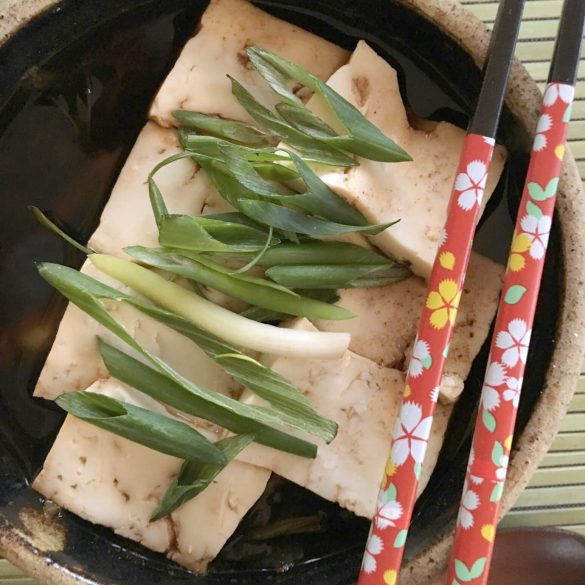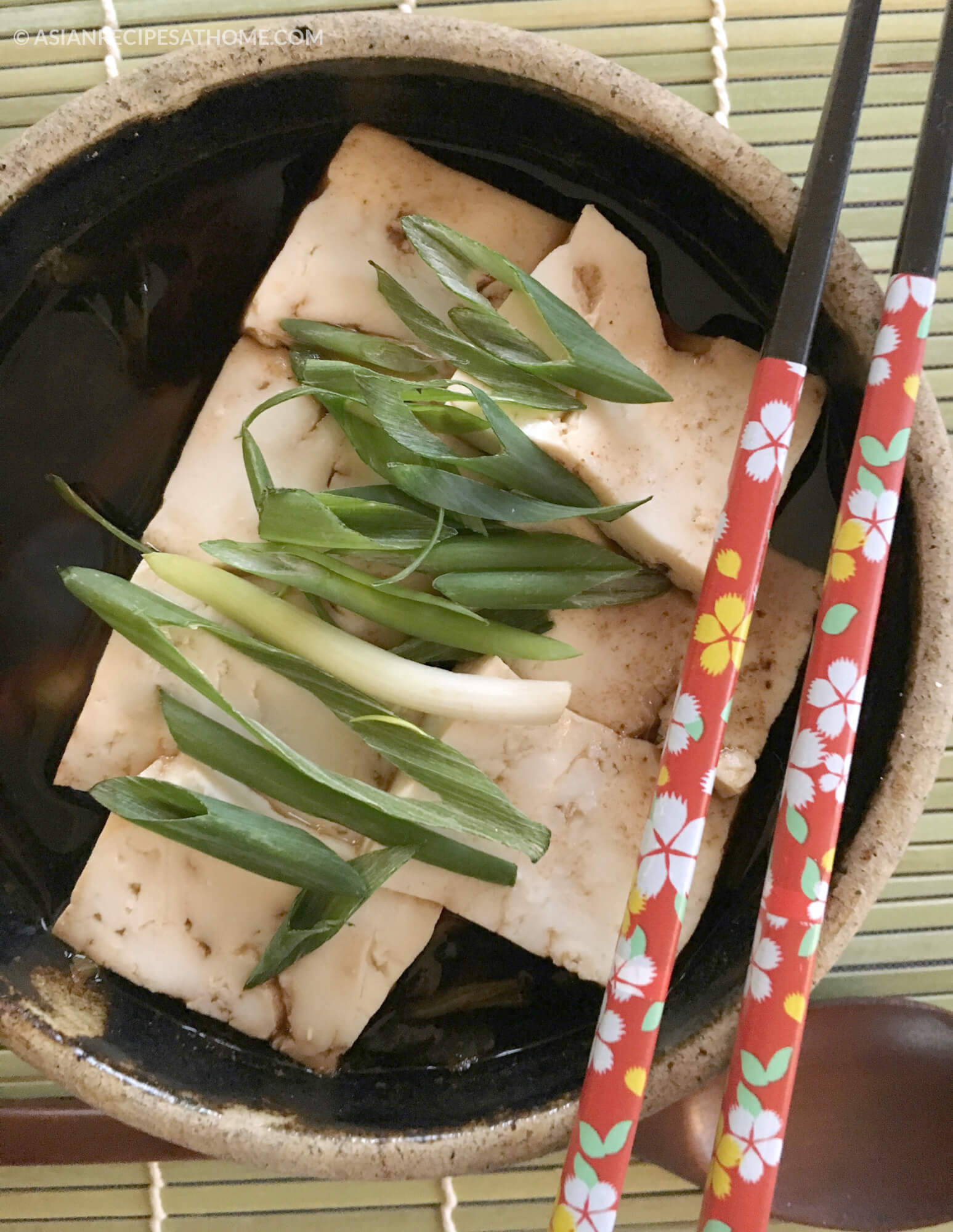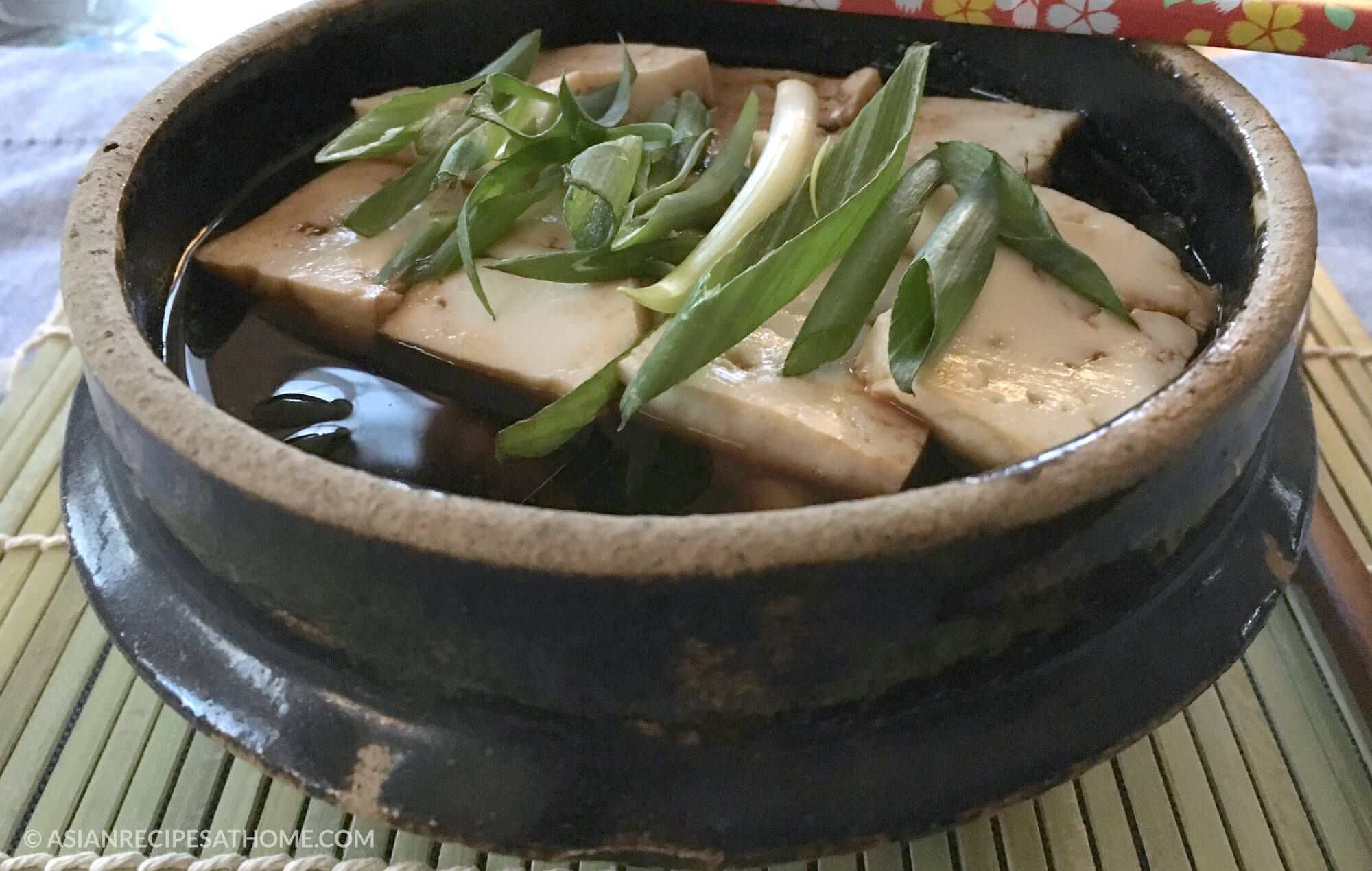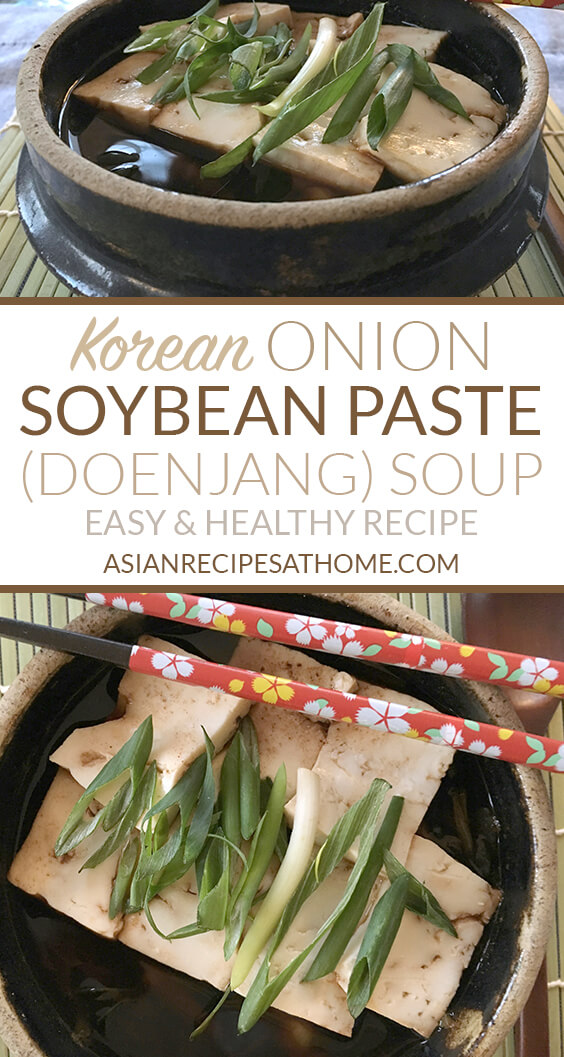This Korean Onion Soybean Paste (Doenjang) Soup is easy to make, healthy, delicious and filling. Soybean paste soup/stews are very popular amongst many Korean households because it’s so easy to make and is filling with a side of freshly steamed white rice. A typical Korean meal usually consists of a stoup/stew, freshly steamed white rice, and a variety of banchan.
Wild Korean chives/onions
In this recipe, we’ve recommended using wild Korean green chives/onions. Korean green chives have a garlicky flavor and are the ideal choice for this recipe. Look for this variety at your local Asian market. If you absolutely can’t get your hands on this particular variety, you can substitute it for regular green onions and shred them thinly, however, it won’t necessarily have the exact same flavor and the texture of the soup will be different.
What is soybean paste (doenjang)?
Korean soybean paste is a fermented bean paste that is made up of soybeans and brine. It has a very salty flavor if you eat it straight from the container. Once you dilute the soybean paste with some water for a soup/stew, the flavor becomes less intense and it has a miso-like flavor. Almost everyone who has been to a Japanese restaurant has probably had or tried miso soup, and Korean soybean paste (doenjang) soup is somewhat similar. Korean soybean paste (doenjang) has a sharper and stronger flavor than miso. Miso has a more mild and smooth flavor, while Korean soybean paste (doenjang) has a pungent, stronger and more intense flavor.
Many varieties of soybean paste (doenjang) soup
Once you have had soybean paste (doenjang) soup and understand it’s flavor profile, you can then experiment with adding in different ingredients to your liking and preference. There are so many different recipes out there that utilize soybean paste (doenjang) but may have different ingredients as far as what they add into their soup. Doenjang-jjigae is one of Korea’s most popular types of soup and is served at all hours of the day. Typically you’ll see this soup in a stone bowl (dolsot) that you can place directly on your stovetop burner.
We hope you enjoy this version of Korean Green Onion Fermented Soybean Paste (Doenjang) Soup!
HUNGRY FOR MORE? Subscribe to our newsletter and follow along on Facebook, Pinterest, Twitter, and Instagram for all of the latest updates.

Ingredients
1 cup Korean green chives/onions
1 tbsp Korean soybean paste (Doenjang)
1 tsp red chili pepper flakes (Gochugaru)
4 large dried anchovies
7oz of firm tofu (typically about half of a pack)
2 cups of water
¼ tsp of salt
1 green onion
Instructions
- Rinse and wash Korean green chives/onions and cut about 2-inch length.
- Add anchovies, soybean paste, and water in Korean Stone Bowl (Dolsot) (or medium-sized pot).
- Place the stone bowl on the stovetop burner, and turn on to high. Bring it to a boil.
- Once the soup has reached a boil, remove the anchovies. Then turn the heat down to medium-high and add the cut Korean green onions. Keep boiling for about 3 minutes.
- Cut tofu into cubes or rectangles based on your preference and add to soup, and let boil for another minute.
- Serve in the hot stone bowl and top with freshly sliced green onions.
Notes
Korean Green chives/onions taste like garlic and no need to put extra garlic or green onion. This is a special spring soup with the great wild Korean chive/onion texture.
We love seeing your creations from our recipes! Tag us on Instagram at @AsianRecipesAtHome.
Recommended items for this recipe:
Disclaimer: Under no circumstances shall this website and the author(s) be responsible for any loss or damages resulting from the reliance of the given nutritional information or ingredient/product recommendations. Recommended ingredients/products can change their formula at any time without this website and author’s awareness. It is your responsibility (the reader’s) to check the label/ingredients of any product prior to purchasing and/or using. We greatly appreciate your support and understanding.



